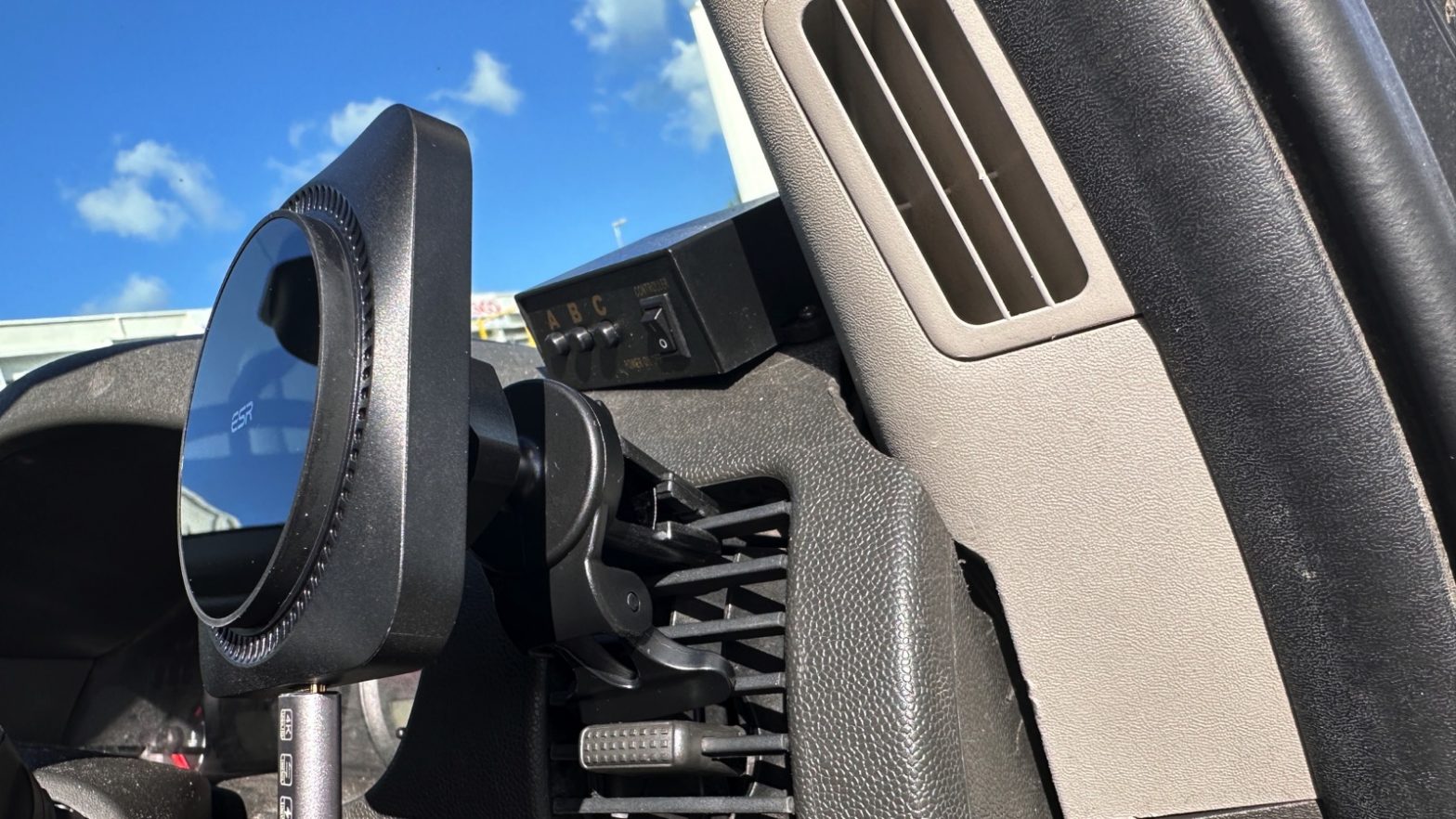
ZDNET’s key takeaways
- This ESR car charger supports the Qi2 standard, allowing it to power up at 15W.
- The CryoBoost fan helps to keep your iPhone cool when charging.
- You do have to supply your own 12V USB-C car charger.
Do you need to charge your iPhone in the car but are frustrated by having cables everywhere or finding that wireless charging is slow or causes overheating? If this sounds like what you need, ESR has the perfect car charger for you: the Qi2 15W MagSafe car mount charger with CryoBoost.
Also: You can turn your old Android phone into a ham radio – here’s how
There are three key aspects I consider when evaluating a car wireless charger, and this one meets my needs:
- Ease of installation: The two mounting options provided with this charger make installation straightforward, earning it a thumbs up in this category.
- Performance as advertised: The charger must meet its promised output, and this one does precisely that. The CryoBoost feature means that the charging head remains cool, even when under heavy load or in hot weather.
- Reliability: Many wireless chargers fall short here, overheating during prolonged use and failing. However, after logging several hundred miles using this charger, I’ve encountered no issues with this unit, which is a testament to its reliability
ESR Qi2 15W MagSafe car charger with CryoBoost tech specs
- Provides Qi2-certified, 15W MagSafe iPhone charging
- The powerful ring of magnets has 1,600 grams of holding force to keep your phone securely in place
- CryoBoost phone-cooling fan and heat-dissipating tech keep your phone cool while charging
- Mountable on your car’s air vent or dashboard
- Easily switches between portrait and landscape modes
- What’s Included: MagSafe Car Mount Charger, air vent mount, dashboard anchor, 3.3-ft/1m USB-C to USB-C cable (car charging adapter not included)
The Qi2 wireless charging standard enables full 15W charging speeds from non-Apple MagSafe chargers, allowing you the convenience of magnetic charging without the frustration of slow speeds. The ESR Qi2 15W MagSafe car charger with CryoBoost features a Qi2-certified charging head with a strong magnetic ring to securely hold your iPhone in place, regardless of road conditions.
But what’s that CryoBoost bit about? That’s a cooling fan that’s built into the charger head that not only blows cold air over the charger but also over the back of the iPhone.
Also: I highly recommend this 12-in-1 electric screwdriver, and it’s on sale at Amazon
Does it help? You bet it does! I’ve been running this for a few weeks and even giving it an unfair test of blasting heat from the vent right into the charger, and the cooling fan seems to have been doing a fine job.
ESR Qi2 in-car charger attached to a windshield using a suction cup mount.
Adrian Kingsley-Hughes/ZDNET
This charger offers two mounting options: a highly effective vent clamp and an adhesive mount that uses high-quality 3M VHB adhesive for attaching to a dashboard.
I’ve tested both mounting methods and found them to be solid and reliable, even on bumpy roads! However, if you don’t like vent mounts and don’t want to permanently attach the mount, I modified mine to use a suction cup mount, which worked well.
ZDNET’s buying advice
The ESR Qi2 15W MagSafe car charger with CryoBoost is as close to perfect as wireless car chargers get. The charger itself is sturdy and well made, delivers the 15W of power that Qi2 promises, with CryoBoost keeping the charger and iPhone running cool, the magnets hold the iPhone in place securely no matter the road conditions. The two options for mounting — vent or adhesive — give this a great deal of flexibility. The only downside is that for $59, you have to supply your own 12V to USB-C car charger, which you can pick one up for under $10. Otherwise, this is the perfect iPhone car accessory for me.
